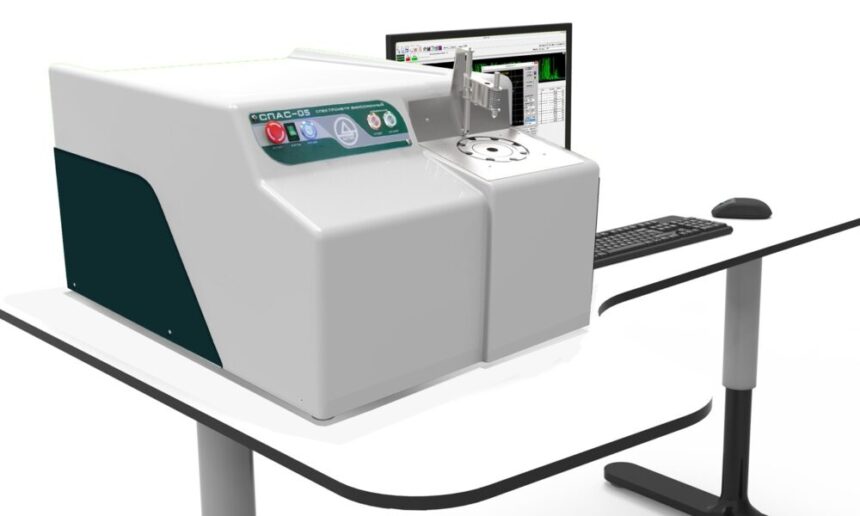Within the domain of analytical chemistry and material science there is the Optical Emission Spectrometer (OES) which can be considered as an essential tool for elemental analysis. Optical emission serves as the basis for this technology that is specifically applied to deliver important information on the components of different materials. Augustine ‘B’ Ogingo: in metallurgy, environmental examination, and quality control, the OES spectrometer has remained essential in the scientific and engineering societies.
What is an Optical Emission Spectrometer?
An Optical Emission Spectrometer (OES) is a device that is applied to analyze the chemical makeup of a substance. It shakes up atoms in a sample to detect and determine the amount of elements contained in it through the particular color of the light which is emitted. This technique enjoys high sensitivity, accuracy, and the rate of analysis, which makes it vital in numerous industries.
How Does an OES Spectrometer Work?
The basic working principle of an OES spectrometer is that a beam of light containing sample atoms is struck with an energy source the excites the atoms in the sample, thus causing them to de-excite and emit light at a set wavelength depending on the element type. The spectrometer obtains this emitted light and the single and multiple diffractions together with the subsequent detection of the wavelengths and intensity levels can also facilitate elemental recognition.
Applications of Optical Emission Spectrometers
Optical Emission Spectrometers (OES) find applications across a broad spectrum of industries:
- Metallurgy: OES is widely employed in the identification of metals and their alloys to determine their appropriate use in functions such as framework, aircrafts, among others.
- Environmental Monitoring: The presence of signs of extra or trace elements in samples found in the environment facilitates tests for pollution or regulatory compliance.
- Quality Control: Regarding quality assurance, in manufacturing, OES maintains that raw materials and finished goods should be of high quality.
- Geological and Mining: Studying of geological samples helps in the search and drilling or mining of valuable minerals.
Advantages of Using Optical Emission Spectrometers
The optical emission spectrometer (OES) offers numerous advantages that make it a preferred choice for elemental analysis:
- High Sensitivity: There is a high capacity for elements detection in very low levels.
- Speed: Quick analysis bringing the end results in a few seconds.
- Accuracy: Better accuracy when it comes to the identification as well as the quantification of specific elements.
- Versatility: This method is ideal for most sample kinds of sample matrix, whether it is a solid, liquid, or a powder.
Arc/Spark OES
This type applies electrical discharge to ionize the atoms. The option is most useful when working with metals and their alloys. Arc/spark OES is commonly applied in metallurgical and manufacturing industries because of its stability and reliability.
Inductively Coupled Plasma (ICP) OES
Specifically, ICP OES uses a plasma torch to ionise atoms. The purpose is it has higher sensitivity and can analyze more elements in contrast with arc/spark OES. This makes the GPS useful in environmental and geological fields as these factors are determinants in location identification.
Choosing the Right OES Spectrometer
Several factors determine the choice of the right OES spectrometer among them being the type of samples, the level of sensitivity required, and the exact application that the spectrometer will be used for. Awareness of their advantages and disadvantage will go along way in helping in arriving at a more informed decision.
Key Considerations
- Sample Type: Make sure that the spectrometer is capable to accepting and analyzing your samples in the form and state that they are in.
- Sensitivity Requirements: Based on the needs of your analysis you will need specific detection limit and hence select accordingly.
- Application Field: There are various types of spectrometers available in the market, try to match the function of the available spectrometer to the need of the specific industry.
Maintaining and Calibrating Optical Emission Spectrometers
Optical emission spectrometer needs constant cleaning and realignment in order to provide accurate and long term results. Some of the things that can be done include; cleaning of the optical part of the instrument, verifying the source of energy and re-calibrating with reference standards.
Best Practices for Maintenance
- Regular Cleaning: It avoids pollution and interference and guarantees accuracy of any measurement to be made.
- Routine Calibration: Keeps the accuracy of the instrument constant in the future periods.
- Component Inspection: This should be done frequently especially if the equipment is frequently used, otherwise it might develop some faults which can be dangerous to the users.
Future Trends in Optical Emission Spectrometry
The field of the OES is progressing all the time due to the technological progression and growing need for enhanced efficiency and speed of analysis. Emerging trends include:
- Automation: Performing the integration of OES with other automatic systems to analyze an object constantly and in real-time.
- Miniaturization: Currently, some advancements are in the development of miniature and portable spectrometers pivotal for field use.
- Enhanced Software: Enhancing the qualitative skills of data analysis and interpretation through better software applications.
In conclusion, Optical Emission Spectrometers (OES) play an important role in different fields and are recognized as reliable and fast methods of elemental analysis, which allow non-destructive testing of materials. Be it the quality control of metal components for automotive and aerospace industries, material science with novel research, or the conservation of the environment’s integrity, OES technology remains the key forerunner of the analytical chemistry industry.








